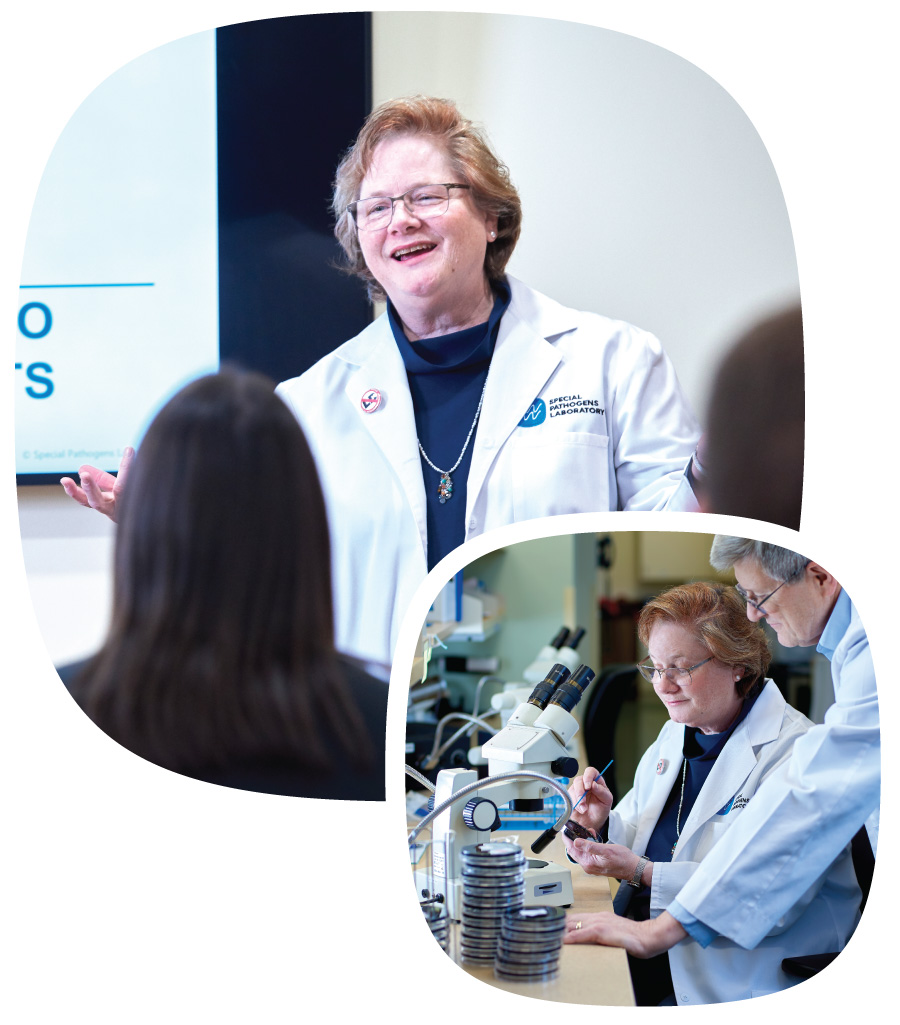Puzzled by® Legionella?
$350.00 USD
Get the ultimate Legionella resource and study guide written by Legionella expert, Dr. Janet E. Stout. Developed to help prepare for the ASSE 12080 certification exam, and for any professional concerned with water safety.
9 Intuitive Modules
Explore an excerpt from each module.
HIDDEN --
Your content goes here. Edit or remove this text inline or in the module Content settings. You can also style every aspect of this content in the module Design settings and even apply custom CSS to this text in the module Advanced settings.
Introduction and Overall Learning Goals
Legionnaires’ disease is a severe infection caused by Legionella bacteria that affects more than 10,000 people in the United States every year, with 10% of those people dying from the disease. The goal of this guide is to educate professionals involved with water safety and management programs, including infection preventionists, risk management professionals, public health professionals, safety officers, facility managers, engineering and maintenance staff, water treatment professionals, and consultants. Through the education and training provided in this guide, we hope to reduce the risk of Legionnaires’ disease in facilities.
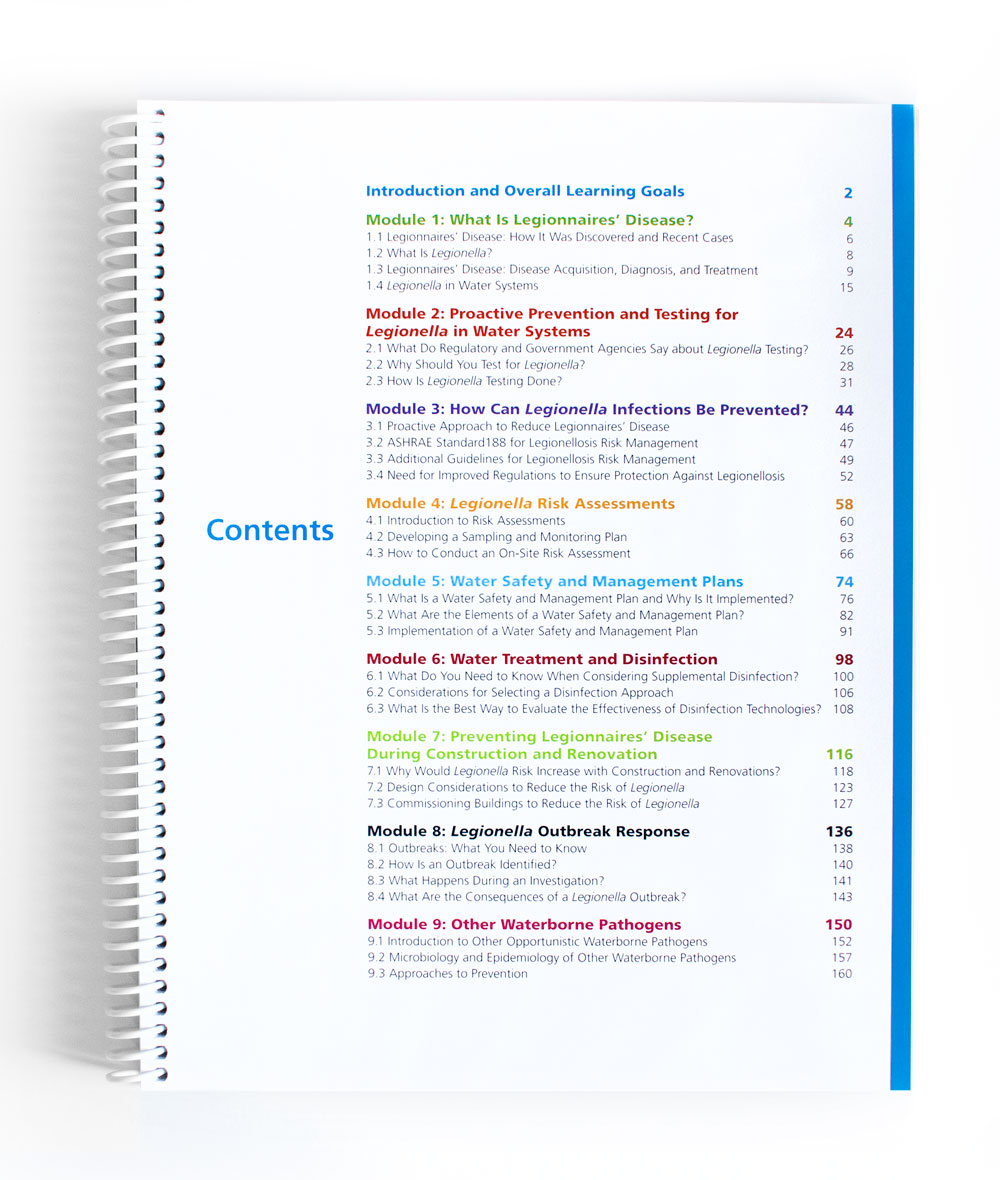
Module 1: What is Legionnaires' Disease?
Since 1976, outbreaks of Legionnaires’ disease continue to occur and increase each year. Between 2000 and 2017, there was an increase of five and a half times the number of cases reported (Centers for Disease Control and Prevention 2018). This increase could be due to improved awareness of Legionnaires’ disease and an increased demand for patient testing. It could also be a result of an increase of Legionella bacteria in our environment, due to weather events, or a greater number of susceptible people in the general population, such as the elderly and immunocompromised…
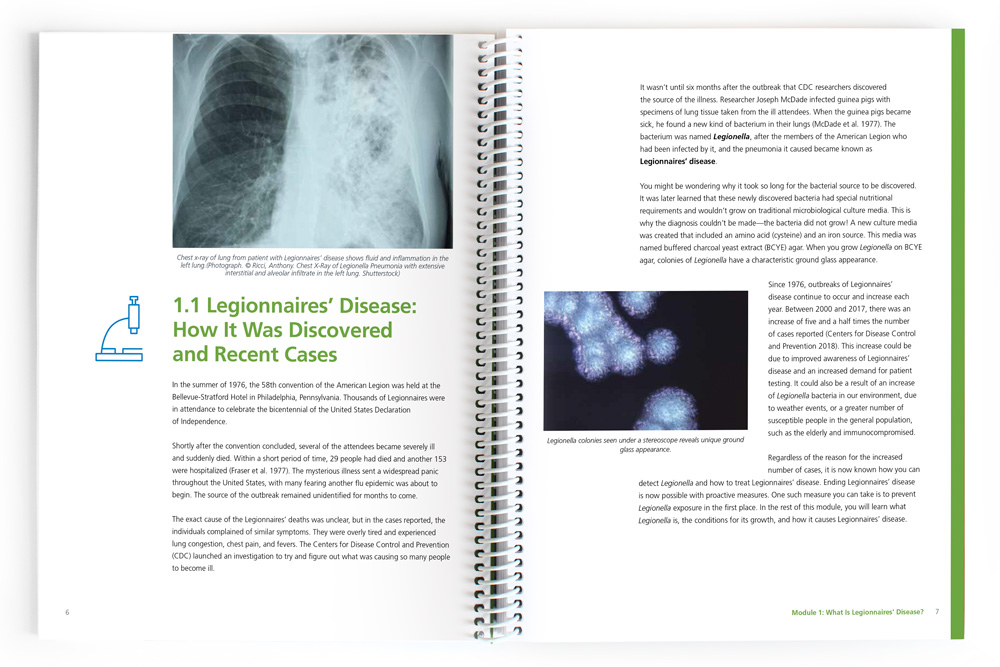
Module 2: Proactive Prevention and Testing for Legionella in Water Systems
The presence of Legionella in the water systems of hospitals and other buildings is the most important risk factor for healthcare or building-associated Legionnaires’ disease. You may find it surprising that the CDC doesn’t offer recommendations for routine Legionella testing outside of case investigations—even for hospitals. This is despite the fact that testing has led to the discovery and prevention of healthcare-associated Legionnaires’ disease. Instead, the CDC requires testing the water only after cases have been identified as part of an investigation.
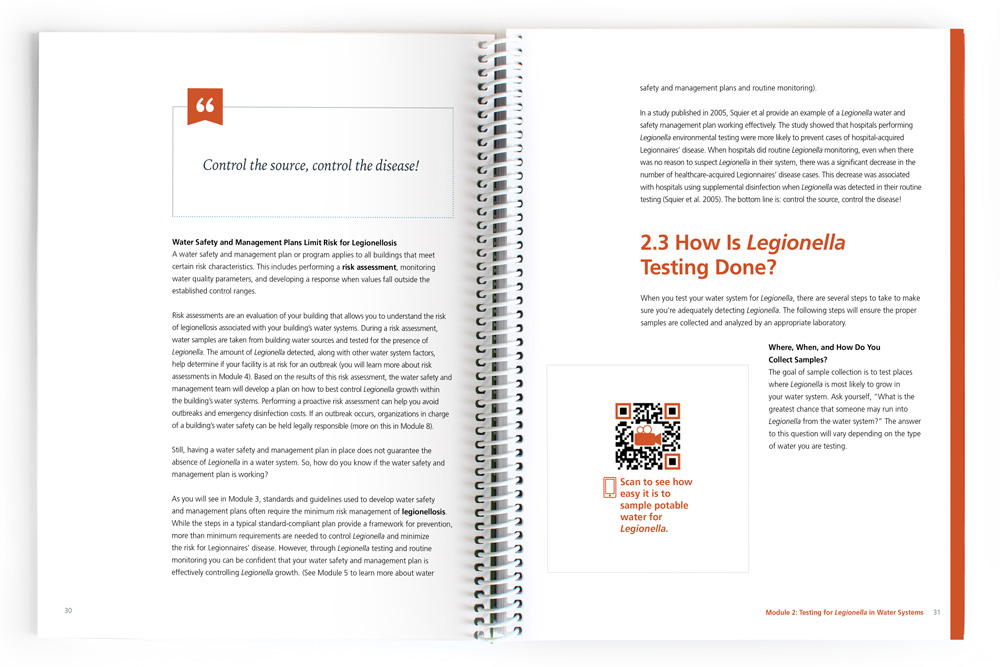
Module 3: How Can Legionella Infections Be Prevented?
ASHRAE Standard 188 provides a description of the types of buildings and water devices that are included in a water safety and management plan, the steps to maintain a water safety and management plan, and who should be included on a water safety and management team. It also describes the types of environmental conditions that promote Legionella growth.
Although ASHRAE 188 recommendations are voluntary, the standard provides local authorities with the information required to develop plumbing codes to help prevent Legionella growth…
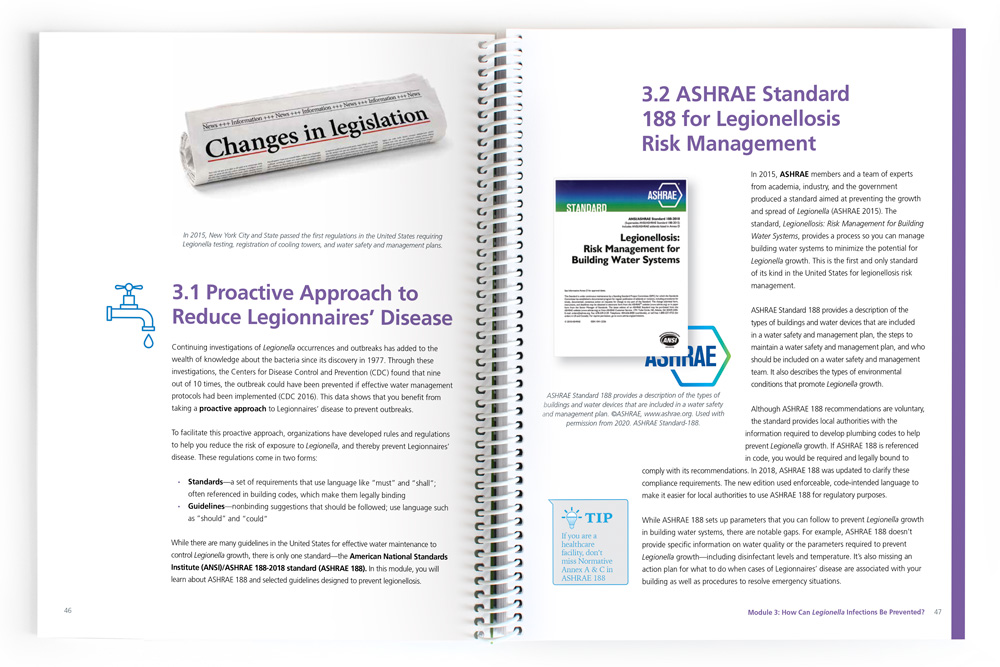
Module 4: Legionella Risk Assessments
It’s important that your water safety and management team develops a sampling and monitoring plan. The sampling and monitoring plan describes when and where water samples are collected for Legionella and how water is monitored to ensure that conditions to limit Legionella growth are maintained.
There are several steps to creating a sampling and monitoring plan. The first step is to review plumbing drawings and floor plans for areas where Legionella growth might occur. Your water safety and management team should review the type…
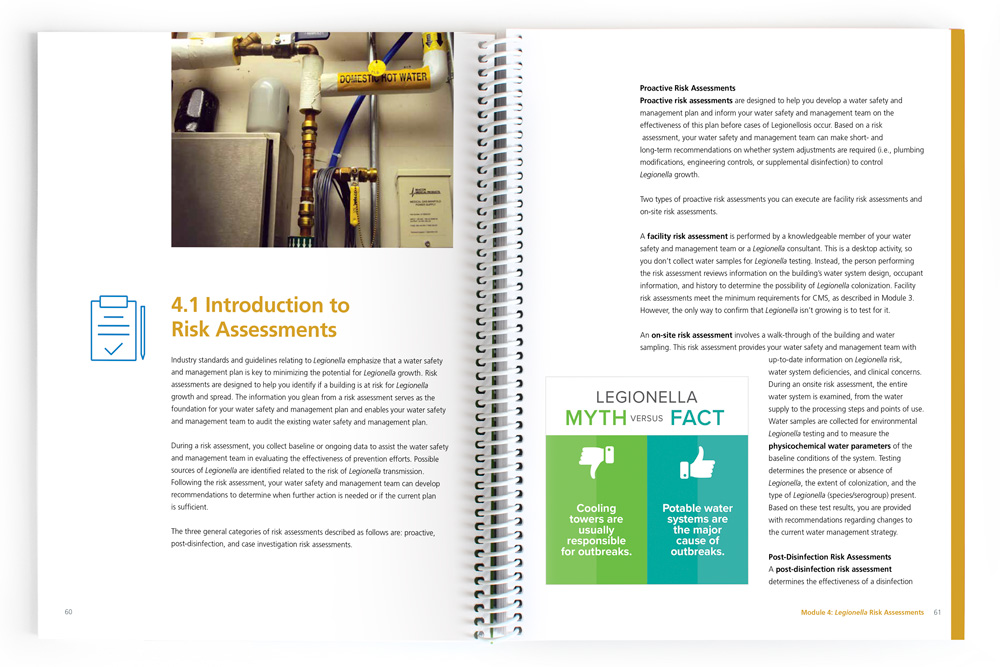
HIDDEN --
Your content goes here. Edit or remove this text inline or in the module Content settings. You can also style every aspect of this content in the module Design settings and even apply custom CSS to this text in the module Advanced settings.
Module 5: Water Safety and Management Plans
Water safety and management plans are designed to manage your building’s water systems to minimize the risk of building-associated Legionnaires’ disease. Simply put, their purpose is to prevent Legionella from growing in your building’s water systems. This can be accomplished through monitoring and controlling water conditions that degrade water quality and promote Legionella growth. When designed and implemented effectively, these plans can minimize Legionella growth and the potential for disease transmission.
CMS requires that all licensed hospitals, critical access hospitals, and long-term care facilities implement a water safety and management plan.
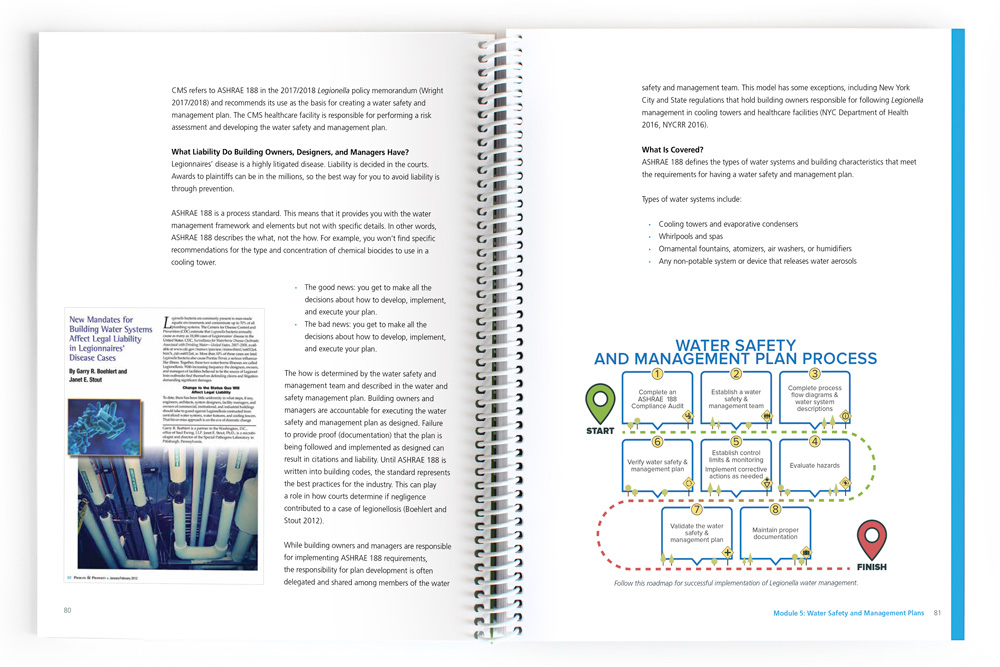
Module 6: Water Treatment and Disinfection
Implementing supplemental disinfection and ensuring disinfection systems are properly functioning enable you to control Legionella growth. If the water system is working as it should, but a significant amount of Legionella has been detected and it is a pathogenic species or serogroup, then you should consider a supplemental disinfection method. This is especially true if your facility houses people that are susceptible to Legionellosis, such as a senior living or a healthcare facility.
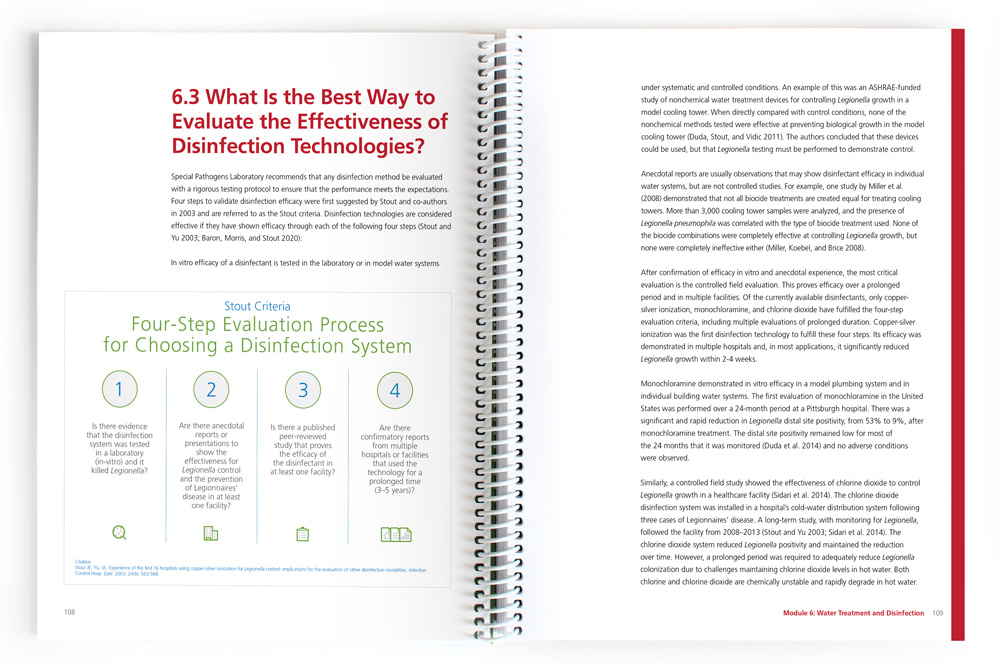
Module 7: Preventing Legionnaires’ Disease During Construction and Renovation
Similarly, a disturbance in potable water served as the source of Legionella exposure during construction at the Rhode Island Hospital in Providence. In this case, there were three separate outbreaks of Legionnaires’ disease that occurred over the course of 10 years, resulting in two deaths (Mermel et al. 1995). When testing was performed, it showed widespread contamination of the hospital’s potable water system with Legionella pneumophila serogroup 1. Investigators matched an increase in positivity to a concurrent construction event…
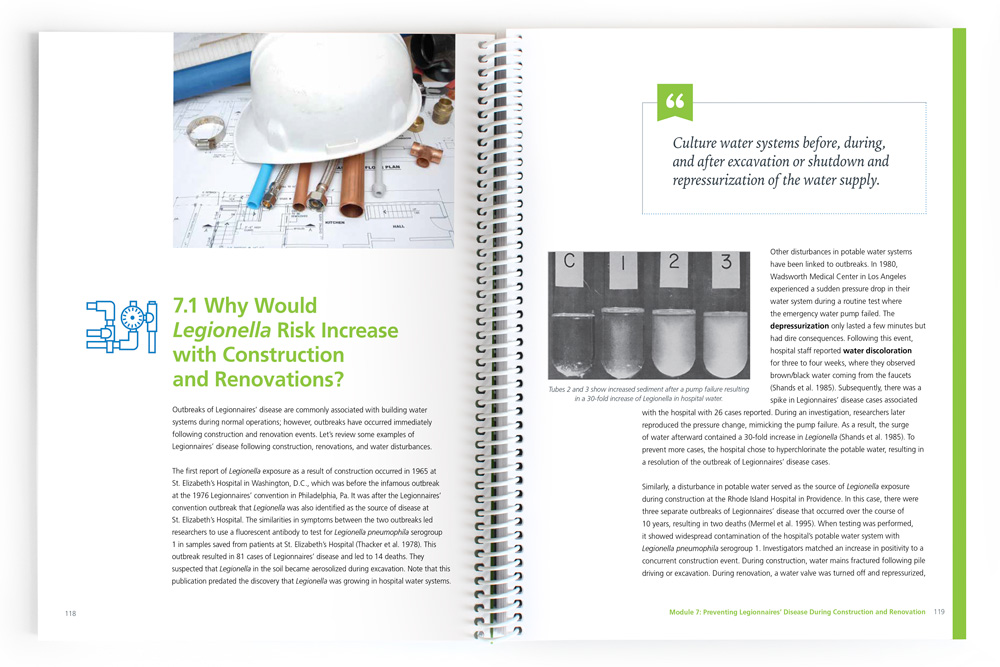
Module 8: Legionella Outbreak Response
When a health department determines that an investigation is required, public health officials work with facility leadership, including facility managers, hospital administrators, quality assurance staff, infection preventionists, and others. If your facility is found to be the source of exposure for a Legionnaires’ disease case, emergency prevention measures might need to be implemented.
The following emergency prevention measures could be required to protect building occupants and patients from exposure to Legionella, and to identify the extent of the outbreak and source of exposure (CDC 2019)…
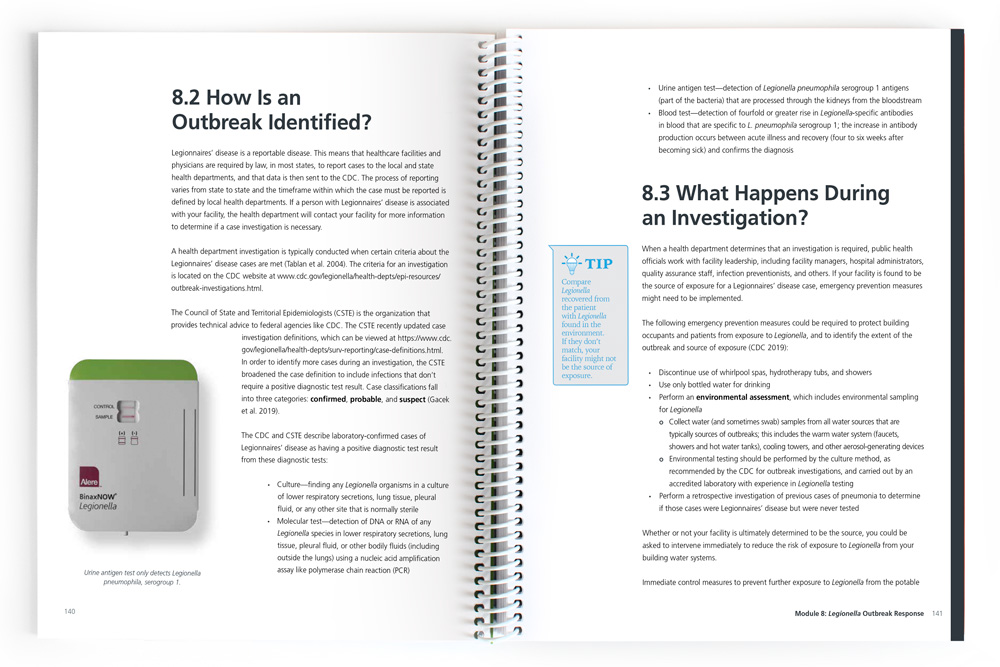
Module 9: Other Waterborne Pathogens
he opportunistic waterborne pathogens discussed in this module are microorganisms specifically mentioned in the 2018 Centers for Medicare & Medicaid Services (CMS) memorandum (Wright 2018), which mandated addressing the risk from waterborne pathogens in building water systems (as discussed in Module 3). These microbes include: Pseudomonas, Acinetobacter, Burkholderia, Stenotrophomonas, nontuberculous Mycobacteria (NTM), and fungi.
Unlike the fecal pathogens mentioned earlier, these organisms cannot be completely removed from water or inactivated by filtration or disinfection at the treatment plant. At times, opportunistic waterborne pathogens can amplify after these treatments…
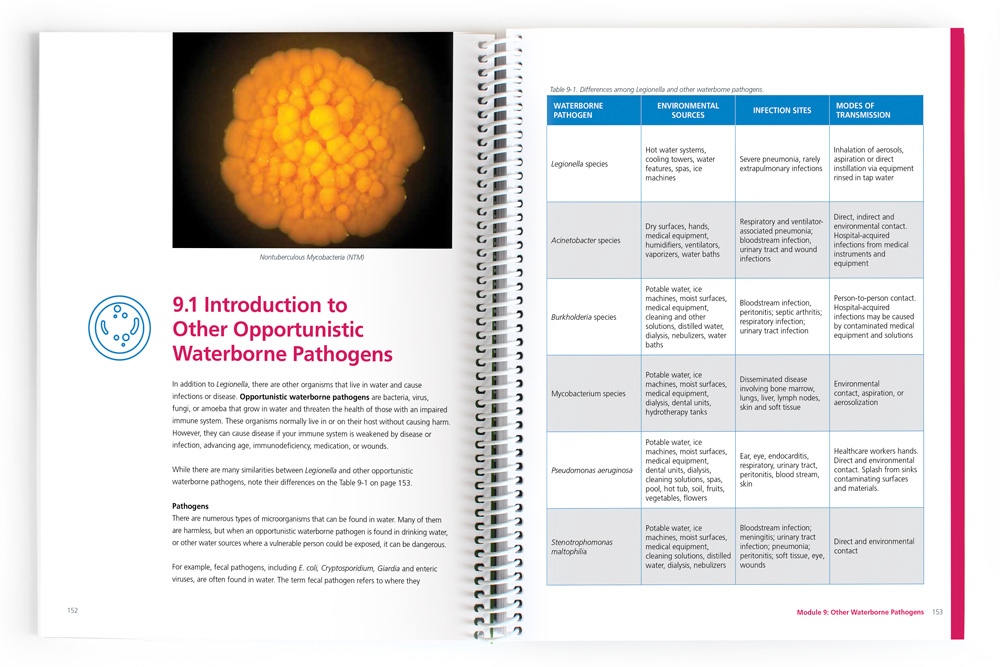
Take a peek inside
Flip through to preview the introduction spread from each module.
Benefits
Ideal for Professionals
concerned about water safety, instructors, and students.
Authoritative Resource & Guide
provides foundational knowledge you need to understand and control Legionella to prevent Legionnaires’ disease.
Written by The Legionella Experts®
with contributions from infectious disease, microbiology, engineering, public health, and infection prevention professionals.
Officially Recognized by ASSE
as appropriate training material in preparing for the ASSE 12080 certification examination.
Accessible & Practical
filled with tips and myth-facts.
Interactive
Take practice quizzes, access videos and download PDFs, web resources and tools.
Reviews
Schedule your ASSE 12080 Approved Training and...
Get the book for FREE!
Get certified as a Legionella Water Safety
and Management Specialist!
Special Pathogens Laboratory is officially approved by ASSE to provide certification training for the ASSE/IAPMO/ANSI 12080 Standard: Professional Qualifications Standard for Legionella Water Safety and Management Personnel.
Special Pathogens Laboratory partners with IAPMO and Special Pathogens Technology to deliver the training.
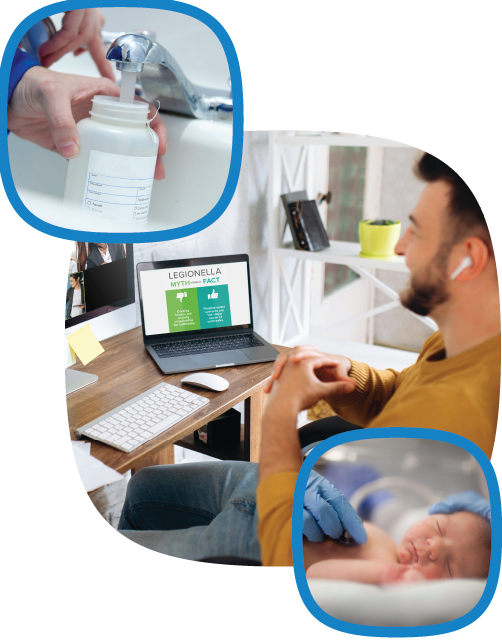
3 Day, Live, Virtual Course for $1299 includes:
- ASSE 12080 approved training
- Multidisciplinary team of ASSE-certified instructors
- Unparalleled Legionella expertise
- Live, 3-day virtual course
- Breakout sessions with Q&A
- Peer-to-peer interaction
- FREE Legionella Guidebook ($350 value)
- ASSE Exam Fee ($135 value)
- Ongoing supplemental resources
- CEUs: 24 IAPMO, 19 ASHE, 6 AWT
- Networking opportunities
- Fun and engaging
- Skip the line and take exam immediately after training
Legionella Resources

Water safety and management plans at your fingertips.

Process flow diagram creation made easy.




